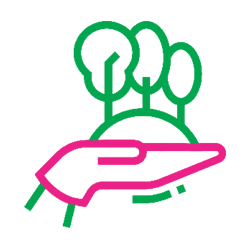Mass planting is planting lots of the same plant – seems simple right? Yet somehow it is much more complicated than one would first expect. This is a highly utilized landscaping technique yet it is often overlooked or underdone by the DIY gardener. So to help you out with your garden, we’re here to break down the technique of planting en-masse.
In order to create your mass plantings, you need to have a plan of where you’re going to put them in your garden. This can be as detailed or as rough as you like. Often we see customers come in and buy one of each plant that they like the look of. Then, when they get home, they have to figure out where to put it. We are also victims of this habit! Finding a spot for a singular plant you love amongst a whole bunch of other single plants tends to get a bit messy! But, if you have multiple of the same plant grouped together in the garden it really packs a visual punch. So having a plan of where you’re going to put this group of eye-wateringly beautiful plants is a must!

If you are in need of assistance with your plan, we offer a free one-on-one garden design with our in-house designer, Chris! You’ll come away with an action plan and everything you need to get started on your garden.
What is Mass Planting?
As the name suggests it is planting the same species of plant or similar looking plant in groups. When plants are grown en-masse they have a multitude of benefits:
- Generally low maintenance (all having the same needs as one another)
- Cover large chunks of unsightly garden bed or land
- Visually appealing and draws the eye
- Acts as a weed suppressant
- Breaks up areas of garden with a colour or textural drift
- Creates order, be it natural or formal
- You get to enjoy more of your favourite plants!
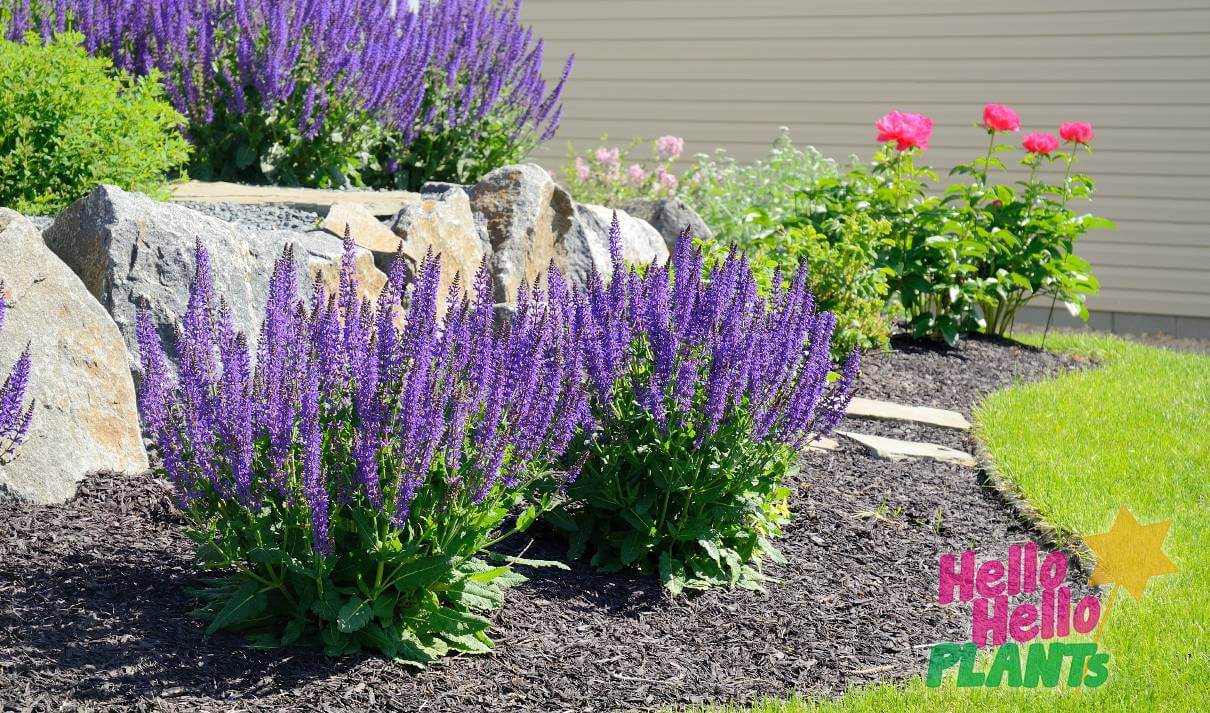
Odds & Evens
As gardeners, we tend to try to replicate nature and the way in which she sows and grows her plants. Staggered clusters of grasses or shrubs meander across the landscape in a satisfyingly pleasant swathe of colour and texture. It is found that to replicate this look, one must group the same species of plant in clusters of 3, 5 or 7. Odd numbers tend to have a more natural look and can be placed in organic, flowing patterns. They are also more difficult for our minds to divide and group, therefore implying a more naturalistic appearance. When we look at even numbered plantings we can easily divide them into equal parts, which gives a sense of man-made structure and order.
Even plantings tend to have a very distinct pattern, sometimes even a grid or lined look. Even numbers are often best suited to formal gardens, where we attempt to control the chaos that is nature. In so doing we create an easy to interpret outdoor space, which in turn has a calming effect. Japanese gardens often employ an ordered and structured design for this very reason! Even plantings are also used as a feature or to highlight one. Think of a pair of standard Ficus planted on either side of an entrance or walkway. Or two trees in a line of four on either side of a feature fountain against a wall. This isn’t to say that a planting of 3 can’t still be a feature too! Just check out the garden below.
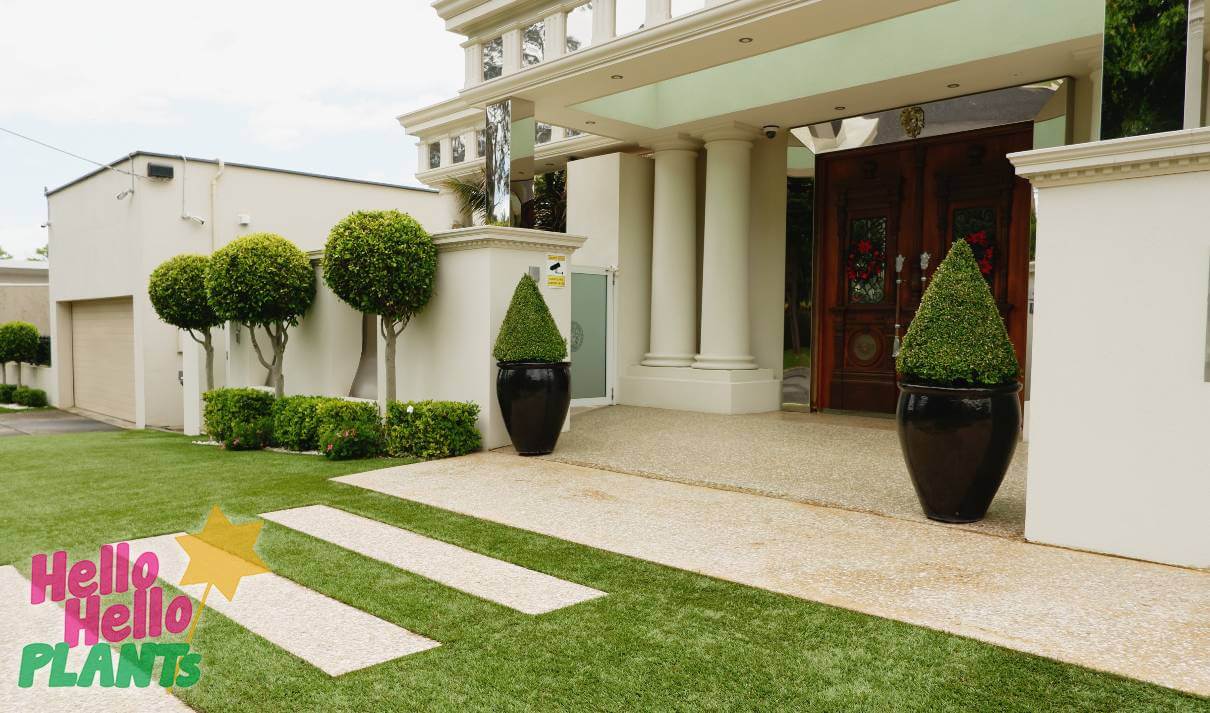
Whether they’re in evens or odds, most groupings are intended to merge together to create one big block or band of colour and texture. Dependent on the plant species you can individualize the plants in their grouping to make them stand out against stones, mulch or a low lying ground cover. This technique tends to create a feature out of the individual plants whilst still grouping them.
Bigger groupings of plants
Planting in higher numbers is reserved for larger gardens, floral planting displays (very commonly used in annual flower displays), simple garden fillers and backdrops. These are still all mass planting techniques, just much simpler with less rules or boundaries. More than 10 of the same plant are usually grouped to create a mass of groundcover, a wall of greenery or a block of colour and texture rather than a pattern or feature. When mass planting in these numbers we’re trying to either create a backdrop for our feature plants to stand out on or a lawn or hedge substitute! It’s a great way to get the most out of one type of plant.
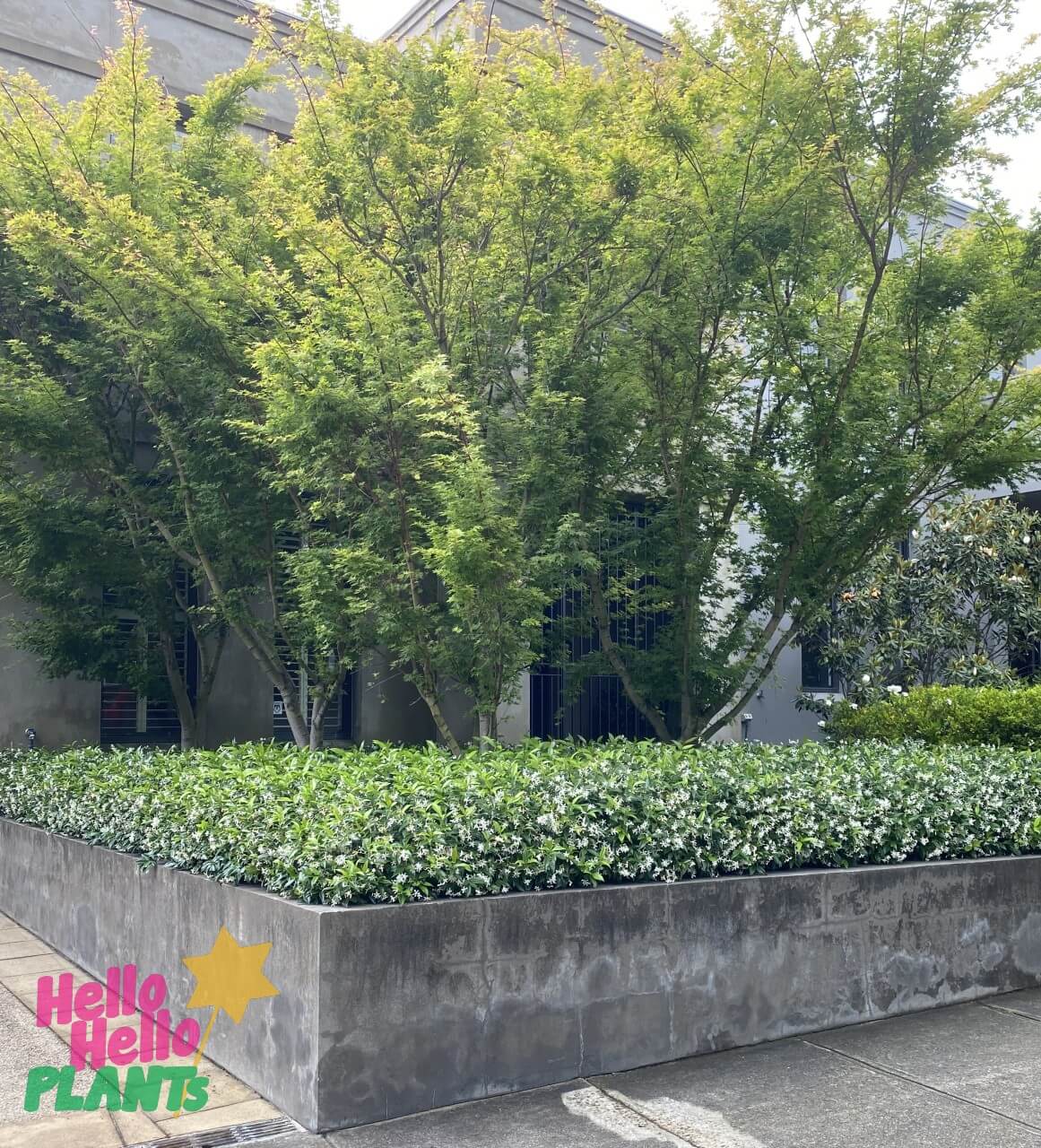
Here we have Trachelospermum Chinese Star Jasmine mass planted under some Acer palmatum Japanese Maple feature trees. The groundcover jasmine suppress the weeds, grow to an easy to maintain height and are a block of scented colour for the maples to stand out against.
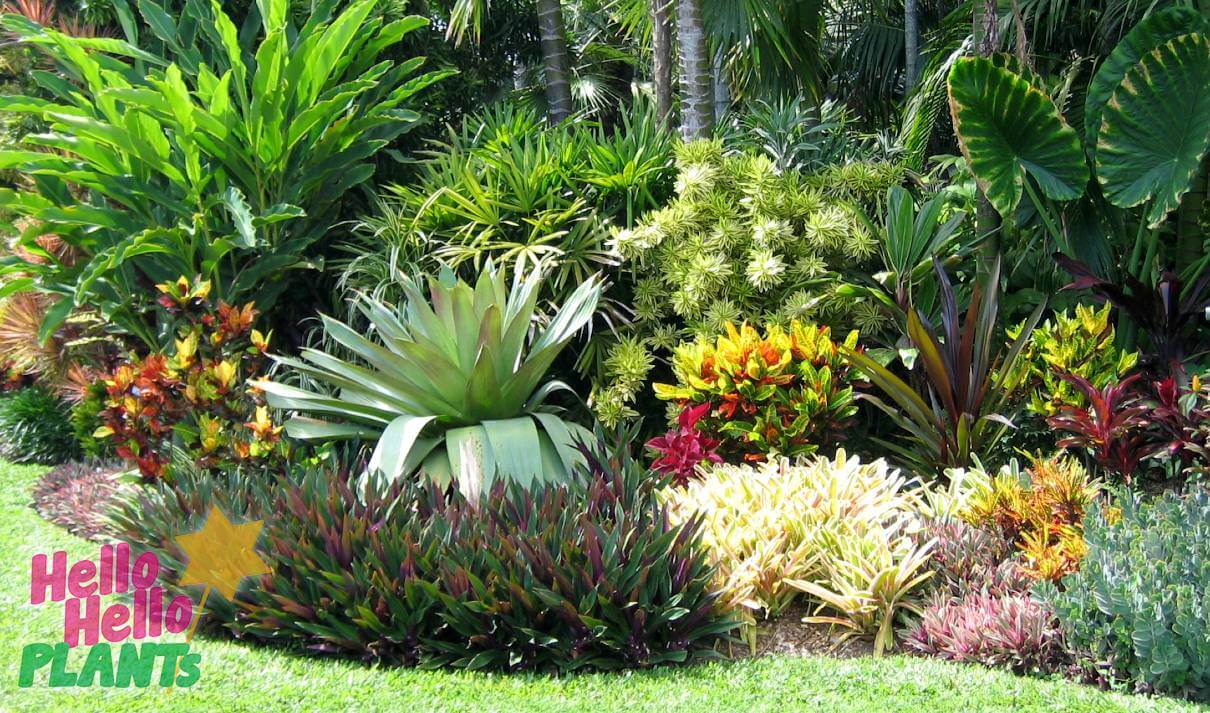
Blocks of colour and texture in a tropical garden bed
Drifts vs Mass Plantings
Although very similar, these are two different styles of plant groupings.
Drifts are bands of the same species of plant that creates a wave of texture and colour across the garden bed or landscape. Often the band width will vary, with a wider middle section, tapering off at the ends. As they naturally look like colourful or textural ribbons upon the landscape they can be layered or intertwine with feature plants and ornaments, weaving in and out.
Mass plantings, on the other hand, are large blocks of colour and texture, usually used to fill spaces, create a backdrop or a feature.
Is hedging considered mass planting?
Yes and no. The plants are grouped en-masse as the same species to create a dense shape or border, but are planted in a line instead of staggered. They are usually trimmed to maintain a particular shape and to encourage bushiness.






